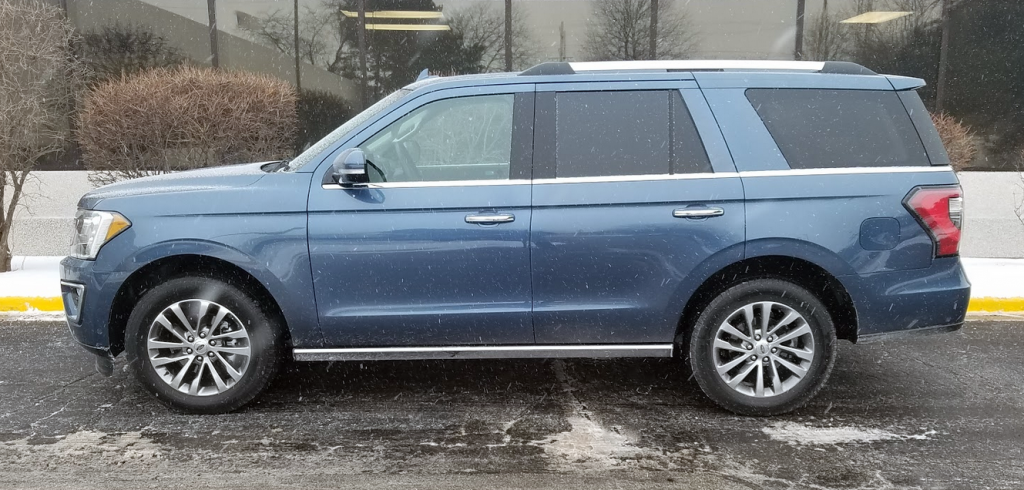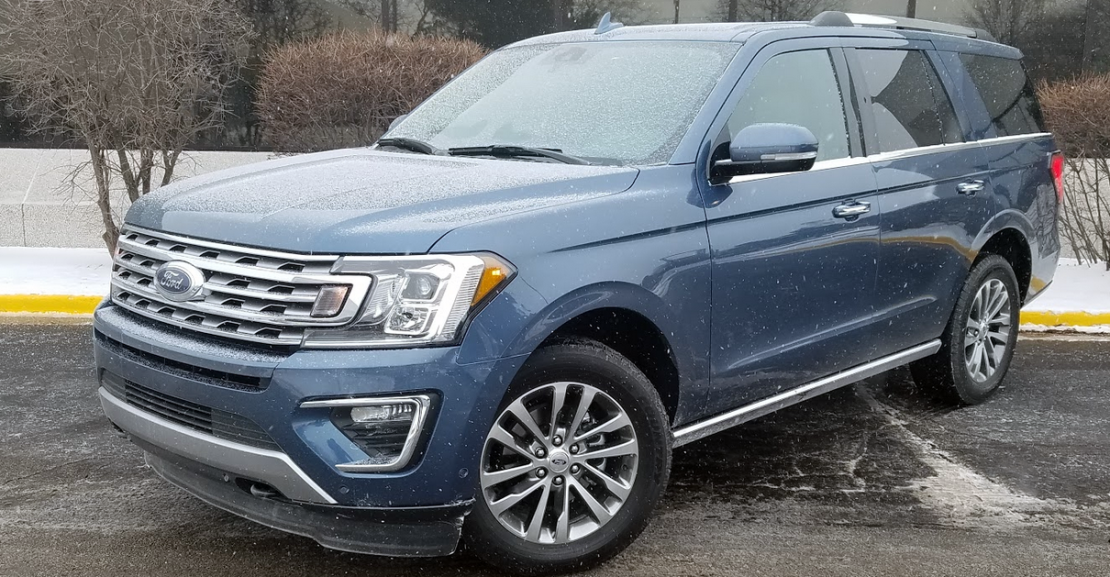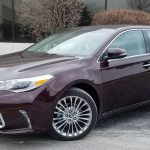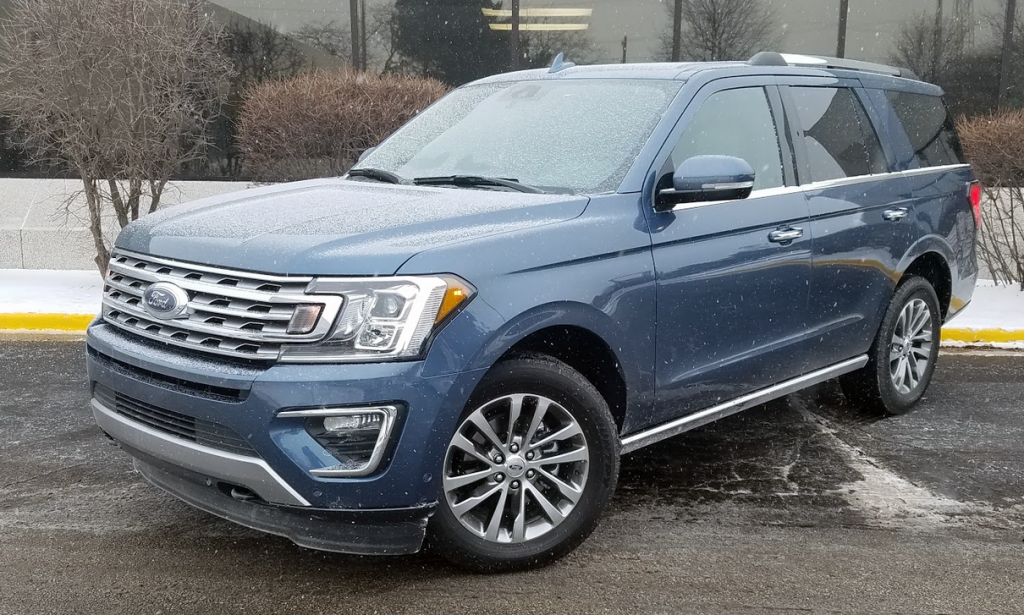
 2018 Ford Expedition Limited 4X4
2018 Ford Expedition Limited 4X4
Class: Large SUV
Miles driven: 295
Fuel used: 19.2 gallons
Real-world fuel economy: 15.4 mpg
Driving mix: 60% city, 40% highway
| CG Report Card | |
|---|---|
| Room and Comfort | A- |
| Power and Performance | B+ |
| Fit and Finish | B+ |
| Fuel Economy | C+ |
| Value | B- |
| Report-card grades are derived from a consensus of test-driver evaluations. All grades are versus other vehicles in the same class. Value grade is for specific trim level evaluated, and may not reflect Consumer Guide's impressions of the entire model lineup. | |
| Big & Tall Comfort | |
| Big Guy | A |
| Tall Guy | A |
| Big & Tall comfort ratings are for front seats only. "Big" rating based on male tester weighing approximately 350 pounds, "Tall" rating based on 6'6"-tall male tester. | |
EPA-estimated fuel economy: 17/22/19 (city, highway, combined)
Base price: $65,705 (not including $1195 destination charge)
Options on test vehicle: Equipment Group 301A ($3030; includes panoramic sunroof, navigation system, and Driver Assistance Package), cargo mat ($40), Enhanced Active Park Assist ($400), Cargo Package ($285)
Price as tested: $70,655
Quick Hits
The great: Loads of room for passengers and cargo, fine handling for a full-size SUV
The good: Nicely finished interior
The not so good: Fuel economy
More Expedition price and availability information
John Biel
You say you need a small bus that can seat up to eight passengers, hold their stuff, and be able to tow a trailer? Ford has the newest candidate for the job, a redesigned full-size Expedition sport-utility vehicle.
The Expedition is a member in good standing of the fraternity of truck-like SUVs that once were coveted status symbols in the sport-ute market. They’ve become less prominent as the huge pool of SUV customers has recalibrated its needs, but they still perform tasks that can’t be met by 4-cylinder compact utes built from architecture shared with front-wheel-drive sedans. Thus, they persist.
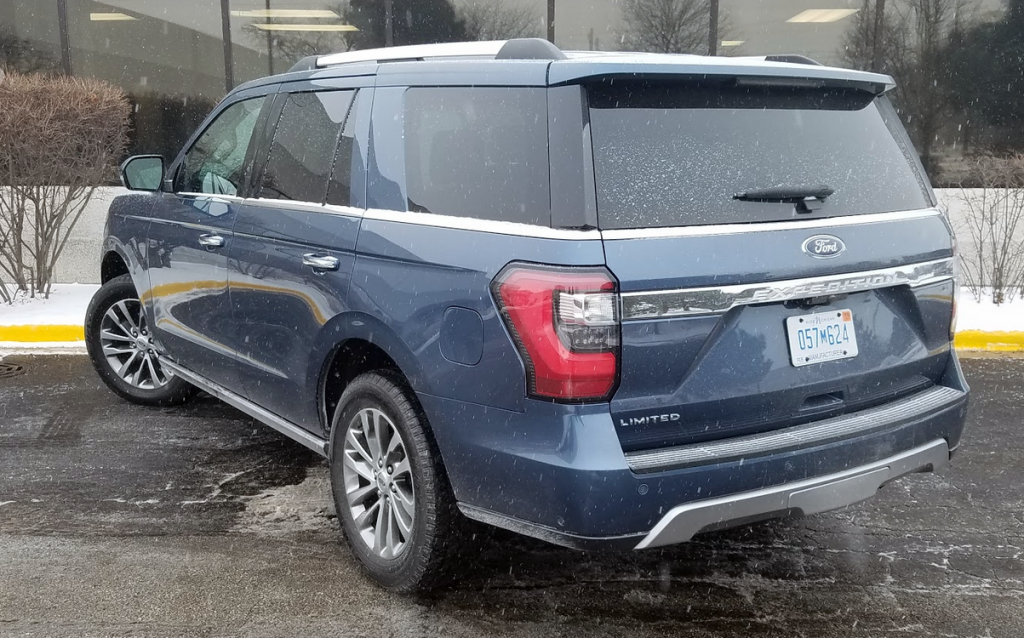
Test Drive: Dodge Durango Citadel
The 2018 Expedition adopts weight-saving aluminum-alloy body panels on a new high-strength-steel frame, increased horsepower, a new 10-speed automatic transmission, and up-to-date technology features. The lineup has been scaled back to three trim levels—XLT, Limited, and Platinum—all with choices of rear- or four-wheel-drive, and extended-length MAX editions. Consumer Guide® tried out a Limited 4×4 on the shorter 122-inch wheelbase.
Expedition is no station wagon body on an F-150 truck chassis. It’s something unto itself with an independent rear suspension and distinct styling (though anyone who’s slipped behind the controls of a current F-150 will get a sense of déjà vu in the Expedition). While the SUV and the pickup have a powerteam in common—the 3.5-liter EcoBoost V6 and 10-speed automatic trans, the only pairing available in the Expedition—the F-150 also has need of two smaller-displacement V6s, a V8, and a 6-speed automatic.

The middle-trim Expedition includes a good number of standard comforts and conveniences for its $65,705 starting price. They include 20-inch bright alloy wheels and all-season tires, a hands-free power liftgate, heated power-folding mirrors with approach lights, windshield-wiper deicer, side roof rails, and power-retracting running boards. Interior touches run to leather-trimmed seats and steering wheel, heated and ventilated front seats with 10-way power adjustment and driver’s-seat memory, heated steering wheel, heated tip-and-slide second-row seats, dual-zone automatic climate control, power-adjustable pedals, and a power tilt/telescoping steering column. Electronic technology features include the FordPass remote-services app, wireless charging, Wi-Fi hotspot, 12-speaker premium audio, SYNC 3 infotainment system with voice control, satellite radio, push-button starting, rearview camera, reverse-sensing system, and blind-spot alert.
Options that practically made the test vehicle into an Expedition Platinum included a panoramic sunroof, navigation, adaptive cruise control, lane-keeping assist, pre-collision assist with pedestrian detection, enhanced active parking assist automatic high-beam headlights, rain-sensing windshield wipers, roof-rail crossbars, and a cargo-management system. With a reversible cargo-floor mat and delivery thrown in, CG’s test truck reached $70,655.
First Spin: 2018 Chevrolet Tahoe RST

The twin-turbocharged EcoBoost engine in the XLT and Limited gets a 10-horsepower boost—to 375—for 2018. (The engine in the Platinum generates 400 horsepower.) It cooperates with the dial-selected 10-speed automatic to deliver a strong and steady power flow with prompt kickdown. There’s plenty of torque—470 lb-ft at 2250 rpm—to ward off big swings in power delivery while alternately slowing and accelerating in traffic. Depending on the driveline, Expeditions can tow up to 9300 pounds. Just don’t expect miracles at the gas pump. EPA fuel-economy estimates are 17 mpg in the city, 22 mpg on the highway, and 19 combined. When this driver put 216 miles on CG’s tester, 55 percent of that in city-type driving, he averaged just 16.5 mpg.
The new Expedition has a nicely composed ride and handles well for such a big thing, though no Ferrari will cower in its Pirellis beside it. This reviewer had the test vehicle over a very snowy weekend when side streets may have been plowed down the middle, but two-way traffic on them required getting off to the side into deeper, rutted snow. The automatic 4-wheel-drive didn’t miss a beat in those situations.
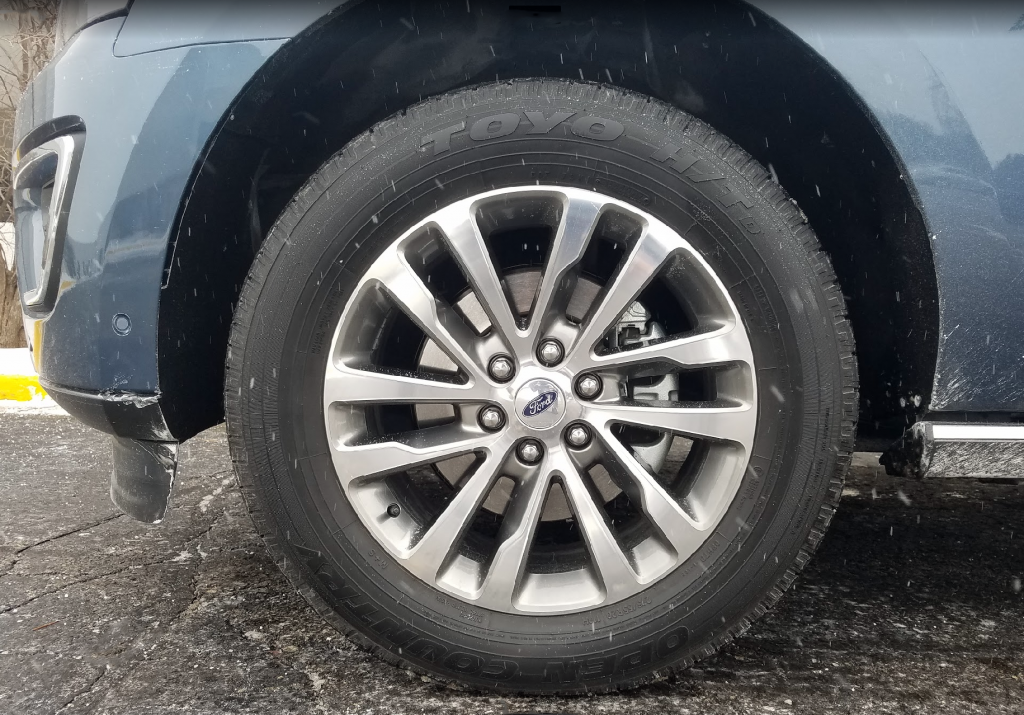
Passengers will find plenty of headroom and legroom on comfortable seats in a high-grade cabin environment. Soft-touch material is abundant on the dash, all four doors, and the upper sides of the center console. A welcome dead pedal provides rest for the driver’s left foot. Three adults will fit across the middle row. It’s a bit of a squeeze getting to the third row, where you might wedge three smaller adults (and certainly two “normal-sized” grown-ups), albeit with tighter legroom and reduced headroom. Third-row seat backs are a little cushier than some we’ve sat in.
Doors open wide for ease of entry and exit, and the power running boards are a help in this respect too. Big windows maximize driver vision.
SYNC 3 can be operated easily on the 8-inch touchscreen, though audio has freestanding power and tuning knobs, plus a bank of six “favorites” buttons. Climate-control dials regulate temperature, though less-convenient repetitive push buttons handle other functions, and controls for things like fan speed and seat heating/cooling are placed very low. Big tachometer and speedometer dials are highly legible. Between them is a field of configurable vehicle-information displays easily summoned by steering-wheel thumb buttons. A handy dial on the console scrolls through terrain settings to tailor the drive to surface conditions, and is flanked by buttons to punch up 2- or 4-wheel drive.
Personal-item storage is the province of a two-bay glove box, a very big console box with an adjustable tray, door pockets, seat-back pouches, covered cup holders in the console for front occupants, two cup holders in the back of the console for middle passengers, and open bins and cup holders in the third-row sidewalls. There’s a large covered space in the forward portion of the console for device inputs and wireless charging.
With all three rows of seats up, there’s 20.9 cubic feet of rear cargo space. The optional cargo-management system adds an adjustable shelf on which to stack items, plus a bin under the floor in which to stash incidentals. For more carrying capacity, rear 60/40 and middle 40/20/40 seats fold flat. Both rows can be lowered remotely via buttons on the left sidewall of the cargo compartment.
Big SUVs aren’t the sales force they once were, but some manufacturers aren’t ready to abandon the field. Count Ford among them.
